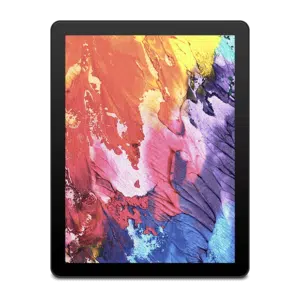The Advantages of Electronic Paper Displays for Readers
The Advantages of Electronic Paper Displays for Readers
Blog Article
Display engineering is now a built-in element of our daily lives, showing in sets from smartphones and e-readers to large-scale promotion panels. On the list of varied range of large E ink display, OLED (Organic Light-Emitting Diodes), and LED (Light-Emitting Diodes) have emerged as some of the very most commonly discussed options. While each type serves a unique distinctive purpose, their variations in characteristics, effectiveness, and use instances make sure they are suited to specific applications. Let's take a closer consider the key characteristics of those display technologies.
Electronic Paper displays (ePaper)
Electronic Paper displays, also called ePaper or Electronic Ink displays, are created to simulate the appearance and readability of traditional Ink on paper. This engineering employs little microcapsules containing priced dark and white contaminants suspended in a definite fluid. When an electrical area is applied, the contaminants proceed to each side of the supplement, producing an obvious image. The image stays fixed till yet another electrical area is used, making it suitable for displaying text-based content such as for example books, papers, and e-readers.

One of the major advantages of ePaper displays is their low energy consumption. Unlike old-fashioned LCD
Knowledge Electronic Paper displays
An electric Paper display (ePaper) mimics the appearance of Ink on paper. Unlike standard displays, ePaper relies on their ability to reveal surrounding mild as opposed to emitting its own. That technology not merely decreases vision strain but also offers unparalleled readability in sunshine, which makes it ideal for e-readers and digital signage solutions.
One standout feature of ePaper displays is their very reduced energy consumption. Since they simply use power when changing content, ePaper monitors are extremely effective and suitable for battery-powered devices. However, their refresh rates are slower in comparison to OLED and LED displays, restraining their applicability to static or minimally active content.
OLED displays
OLED displays are noted for their spectacular visible quality, giving vibrant shades, deep greens, and excellent contrast. Each pixel in a OLED display produces its own mild, reducing the necessity for a backlight. This not just enables finer, more lightweight styles but also effects in better energy performance in comparison to LED in certain scenarios.
One important benefit of OLED displays is their flexibility. They can be made in curved or collapsible types, creating them popular in cutting-edge smartphones and wearable devices. Nevertheless, OLED displays have issues, such as for instance susceptibility to burn-in and faster lifespans in comparison to different technologies.
LED displays
LED displays, the most frequent of the three, depend on a backlit process to light their pixels. Without as successfully impressive as OLED E ink signage, LEDs are very tough, long-lasting, and cost-effective. These qualities cause them to become suitable for a broader selection of applications, including TVs, computer watches, and outside advertising.
LED displays typically accomplish effectively in terms of brightness, creating them a great choice for settings with high surrounding light. Nevertheless, they flunk in reaching the exact same strong contrast and color reliability as OLED technology.

Final Comparison
When determining between ePaper, OLED, and LED displays, the decision depends largely on the intended purpose. For static content like studying or signage, ePaper excels using its low power consumption and high exposure in normal light. OLED shines in applications where lively colors and flexibility are paramount. Meanwhile, LED remains a dependable and cost-efficient option for a variety of general-purpose needs.
Each display engineering brings anything distinctive to the desk, ensuring that there's a perfect choice for every situation. Knowledge these differences can help customers and corporations make informed decisions that suit their particular display requirements. Report this page